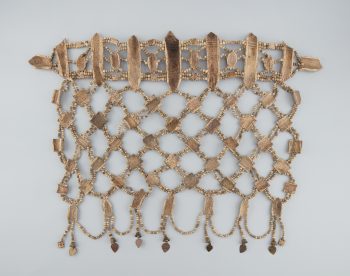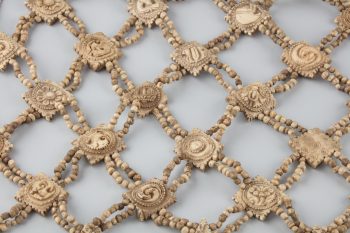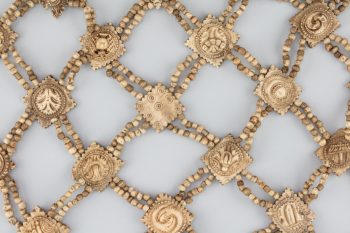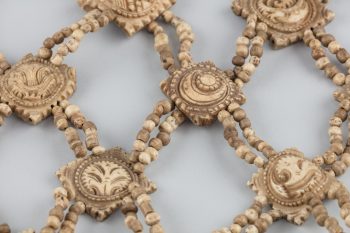Tibet/Nepal
18th - 19th century





Tibet/Nepal
18th - 19th century





Objects made from bone are generally intended to act as reminders of our mortality. Foremost among them are objects made from human bone and most of all, the human skull. Bones are selected with very specific criteria for various ritual uses. Some belonged to holy people. Others have gained ritual potency based upon the character of the deceased and the circumstances of their death. Some rosaries and ritual instruments, such as hand drums and trumpets, are made from human bone. Other bone ornaments, like the ritual apron displayed here, are made of animal bone. Similar aprons are worn by tantric masters during specific stages of ritual ceremonies to symbolize nondual wisdom while conferring initiation.
A religious movement that originated in India around the fifth to seventh century with sacred writings and esoteric teachings and practices transmitted from teacher to student through initiation. These remain an important part of Hinduism and Buddhism today.
The end of this life marked by the cessation of bodily functions followed by decay. According to Buddhism, after death consciousness transitions to an intermediate state known as the bardo before embarking on another life.
Prescribed practices that carry symbolic meaning and value within a specific tradition and are intended to attain a desired outcome. Rituals are usually done as part of a ceremony or regular routine.
The Himalayan kingdoms of the Kathmandu Valley were significant centers of Buddhist culture. Nepalese kings, Buddhist institutions, and ordinary people patronized the vibrant art guilds. The artistic traditions of the regions are well-known in Tibetan areas and beyond, and Newar artists have always been in high demand throughout Tibetan regions and Inner Asia.
Today, Tibetans primarily inhabit the Tibetan Plateau, situated between the Himalayan mountain range and the Indian subcontinent to the west, Chinese cultural regions to the east, and Mongolian cultural regions to the northeast. During the 7th to 9th century, Tibetan rulers expanded their empire across Central Asia, and established Buddhism as the state religion.
Get the latest news and stories from the Rubin, plus occasional information on how to support our work.